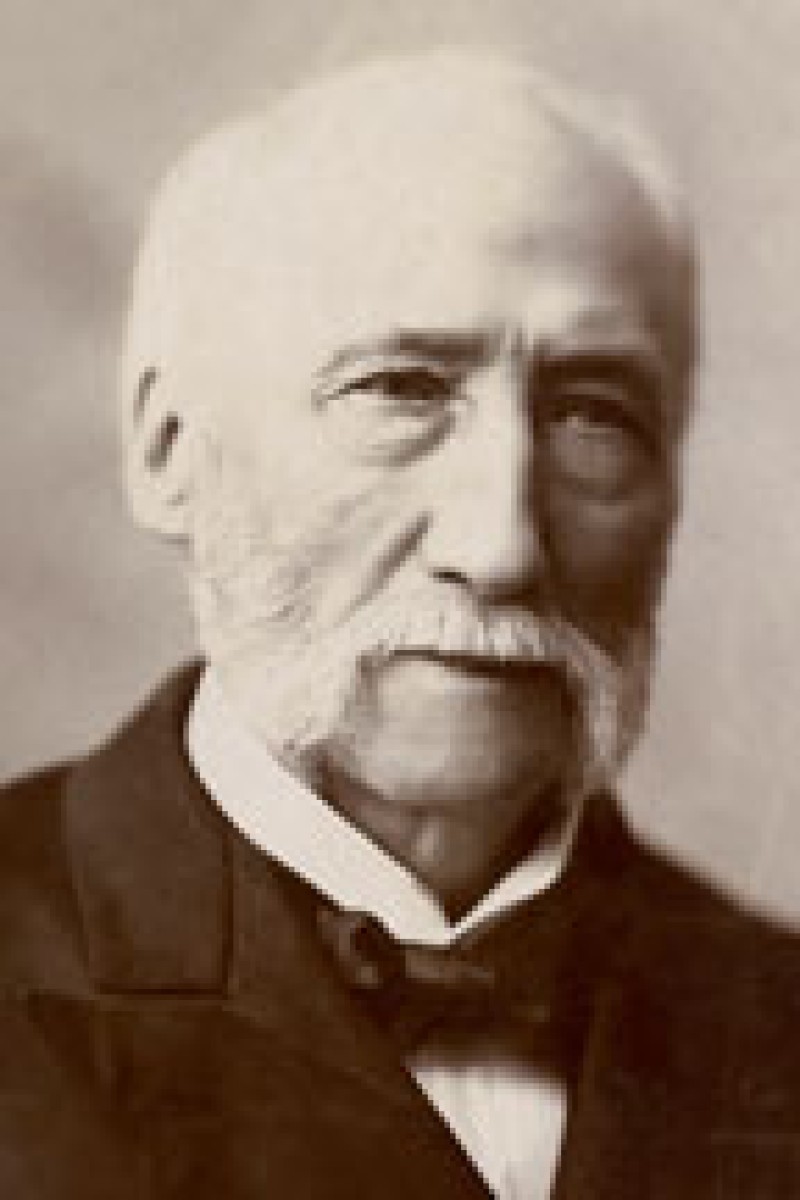Martin Dewey Follett
Martin Dewey Follett was a true Ohio pioneer. At age 10, he moved with his parents and eight siblings to Licking County where they settled on 100 acres of uncleared land. In later life, he became a teacher and a lawyer and devoted his life to supporting education in the public schools and colleges. He also worked to assure the humane treatment of Ohio’s residents in state and county hospitals and penal institutions.
Follett was born on Oct. 8, 1826, in Enosburg, Vt. to John Fassett and Sarah Woodsworth Follett. From 1836 to 1847, Follett attended school and later taught school during the winter. Determined to attend college, he worked to save enough money to enter Marietta College in 1851. He graduated with a bachelor’s degree in 1853, with high honors. In 1856, Marietta College awarded him a master’s degree.
In 1854, Follett joined the faculty of Marietta Academy as an instructor, which began his lifelong support of education. From 1855 to 1857, he served as principal of Marietta High School and also as superintendent of Marietta schools. He was later president of the Washington County Teachers Association and also served on the Marietta Board of Education for 12 years. Marietta College benefited from his service on the board of trustees for many years, as well.
Follett was admitted to the Ohio bar in 1858 and he established a legal practice in Marietta. In 1859, he was admitted to practice law in the federal courts. Gov. Richard M. Bishop appointed him to represent Ohio at the National Conference on Charities in 1879 and 1880. The Democratic Party also nominated him to be judge on the Supreme Court of Ohio in 1880, but he was defeated in the general election.
Follett was elected on Oct. 9, 1883, to fill the unexpired term of Judge Nicholas Longworth, who resigned on March 9, 1883. He served from Dec. 8, 1883 to Feb. 9, 1887. His memorial in the Ohio State Reports stated, “While a member of the supreme court, he established a reputation for industry and judicial ability which was recognized by the profession throughout the state.” His opinions are in volumes 42 through 44 of the Ohio State Reports.
An important issue concerning the ownership of water rights was decided by the 1886 Supreme Court case of Day v. Railroad Company. In the case, the Pittsburgh, Youngstown and Chicago Railroad Company sought to build its railroad through Kent, Ohio on land formerly used by the Pennsylvania and Ohio Canal Company in its operation of the Pennsylvania and Ohio Canal, which used water from the Cuyahoga River. The canal was not navigable by July 1864 and ceased operations. Construction of the railroad would have gone through the property of Day, Williams & Co. The company used the water from the Cuyahoga River in its manufacturing of glass and the railroad would have impeded the company’s ability to obtain the needed water. Day, Williams & Co. sued the railroad, claiming its ownership of the land extended to the middle of the river. The Pittsburgh, Youngstown and Chicago Railroad Company contended that it acquired the land and water rights of the Pennsylvania and Ohio Canal Company upon its dissolution by the Supreme Court on March 8, 1869. The Portage County district court at trial found in favor of the defendants. Judge Follett wrote in the majority opinion that the canal company only acquired the right to use the land and the water in its construction of the canal and not the property deeds. When the Court ordered the company to dissolve, the right to use the land and the water reverted back to the owner, Day, Williams & Co. The judgment of the district court was reversed, a perpetual injunction to stop construction of the railroad was granted and the case was remanded to the district court.
Follett returned to Marietta and established a legal practice with his son. From 1891 to 1905, he served as an unpaid member of the Ohio Board of State Charities, which investigated and recommended changes in treatment of Ohioans living in state hospitals, state schools, county infirmaries, mental institutions and prisons.
He worked to improve the general welfare of the prisoners and the prisons in which they were incarcerated. In 1900, Follett represented Ohio at the International Prison Congress in Brussels, Belgium. He was a member of the Ohio, National and International Prison Congresses. His memorial praised his efforts, “As a member of the board of state charities he has been largely instrumental in bringing, the penal, reformatory, and charitable institutions to the high standard of present attainment. The new hospital to be erected at Lima for the care of the criminal insane can be directly traced to the influence which Judge Follett has wielded for many years upon the state’s policy of caring for the unfortunate.”
On Dec. 19, 1856, Follett married his fellow teacher Harriet (Hattie) L. Shipman in Marietta. Five children were born to the couple. Harriet Follett died on Oct. 25, 1873 at age 39 in Marietta. Follett then married Abbie Mary Bailey in 1875. Their son was born in 1879.
Martin and Abbie were active members of First Congregational Church and he served at various times as Sunday School Superintendent.
Follet died at his residence on Aug. 22, 1911, of a cerebral hemorrhage. His funeral was held Aug. 24, 1911 at the family’s home. He was buried in Mound Cemetery in Marietta.

b. Oct. 8, 1826
d. Aug. 22, 1911
60th Justice of the Supreme Court of Ohio
